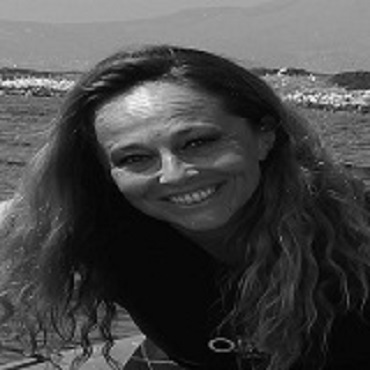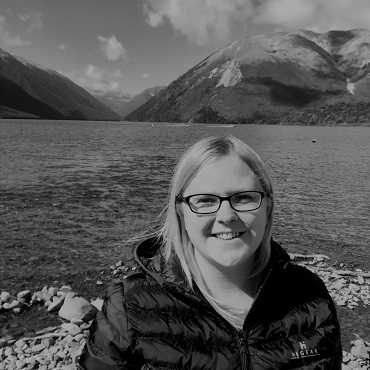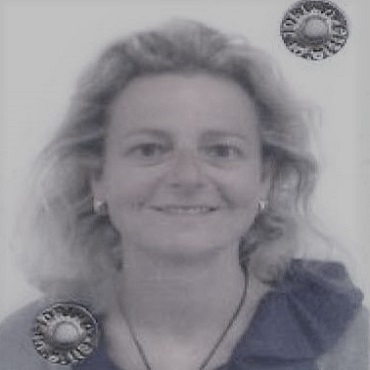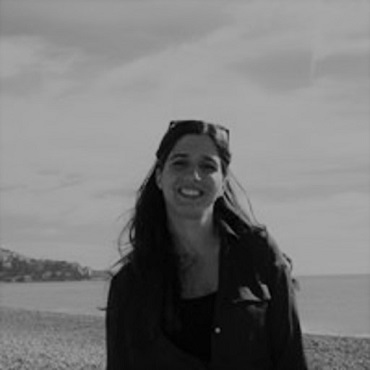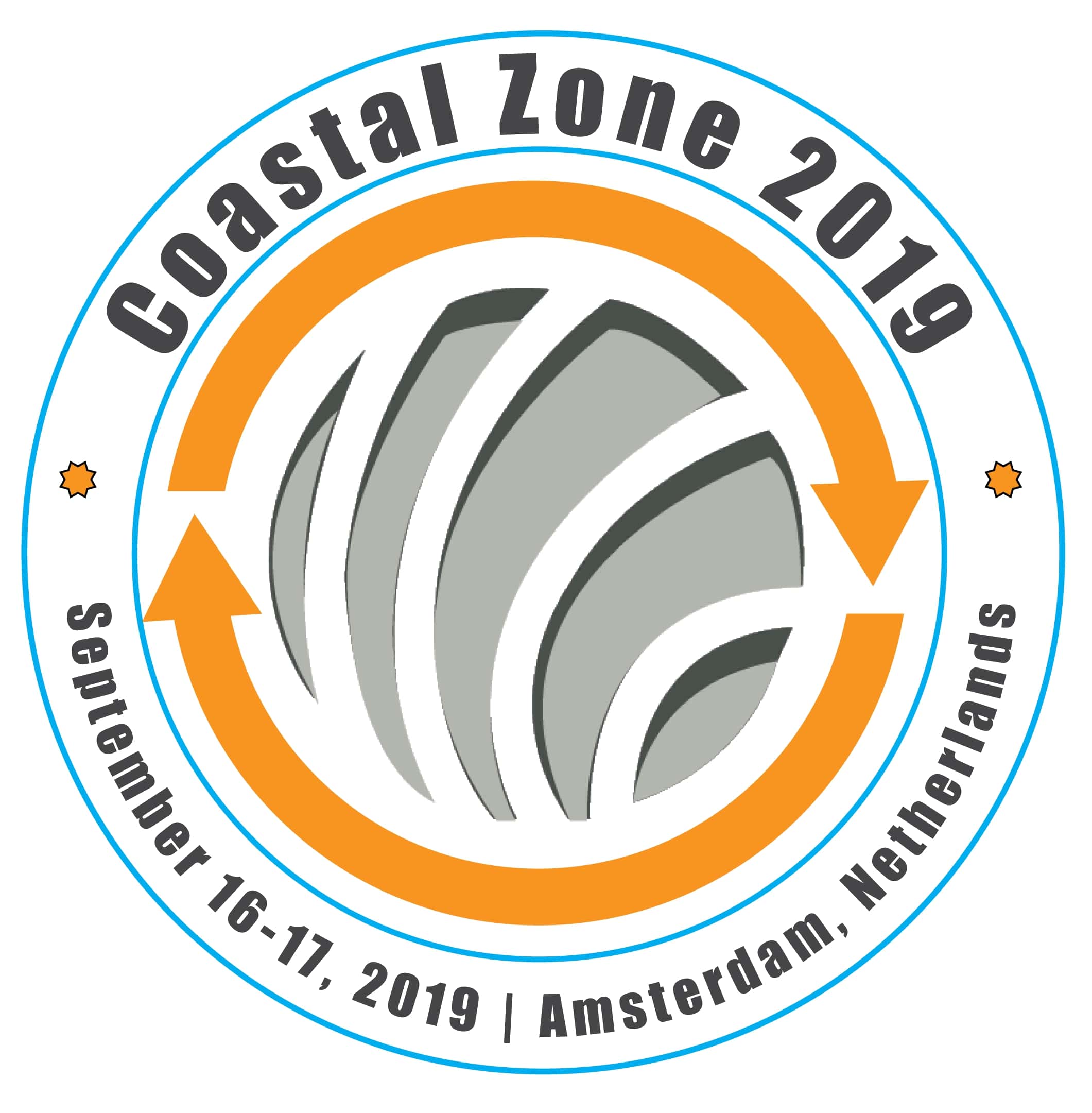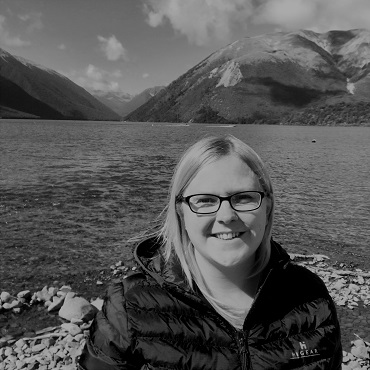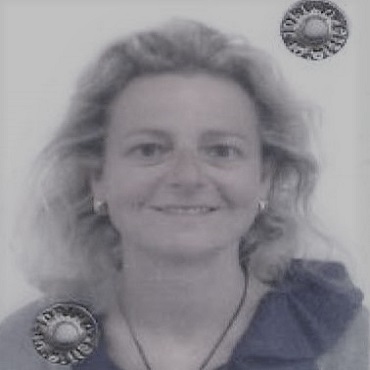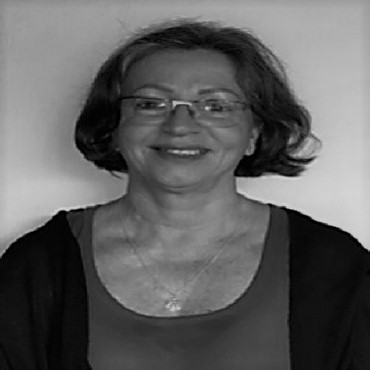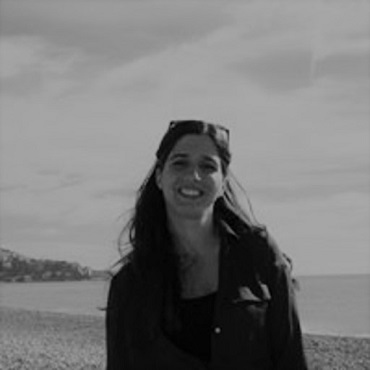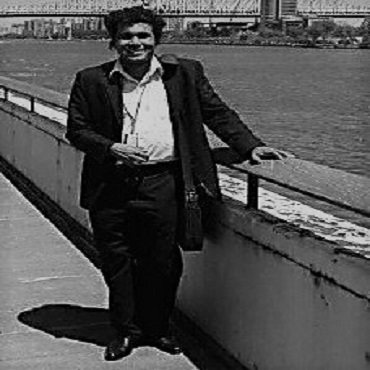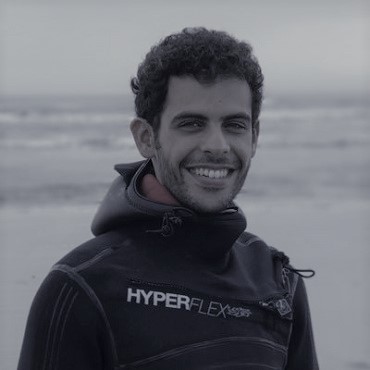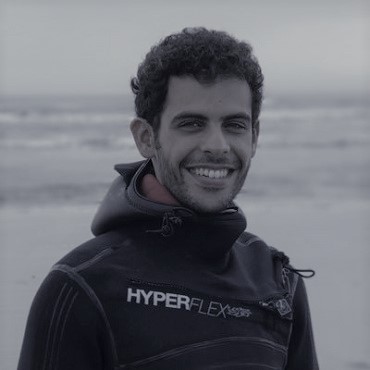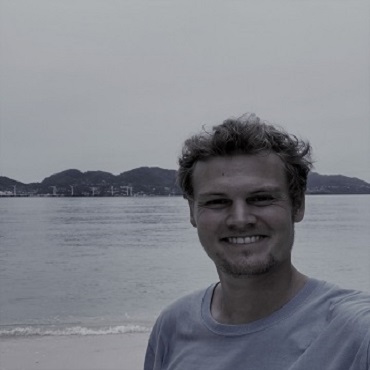Scientific Program
Keynote Session:
Title: Marine spatial planning for the Mediterranean coast of Israel – Confl icts of interest and possible solutions
Biography:
Abstract:
Title: Coastal zone culture: Towards an hermeneutic of waterscape archaeology
Biography:
Giovanna Bucci, PhD Archaeologist, Adjunct Professor of Christian Archaeology and Responsible of Underwater Archaeology Laboratory at Cultural Heritage Department, University of Padova, Italy. National Coordinator of Scientific Research and Underwater Archaeology at Federation ITA F07 A.CDCI. CMAS Diving Center Italia, Bologna - Confédération Mondiale des Activités Subaquatiques. Member of UNESCO Roster of Experts active in protecting Syrian cultural heritage, within the framework of the Emergency Safeguarding of the Syrian Cultural Heritage. 146 archaeological fields (on land and underwater); author of 74 scientific publications. Research key words: Archaeology, underwater cultural heritage, surveillance archaeology, Mediterranean Sea, Late roman Architecture, Syria, mosaics.
Abstract:
Title: Improving visual biodiversity assessments of motile fauna in turbid aquatic environments
Biography:
Robyn E Jones is a marine researcher with a background in marine consultancy and off shore surveying with interests in marine ecology and engineering. she is currently working towards a PhD which focuses on ‘Remote methods for the assessment of coastal biodiversity interac ng with marine renewable developments’ alongside Ocean Ecology Limited and Swansea University.
Abstract:
Title: Portus Vadorum: New data after recent dredging
Biography:
Frida Occelli has been working as a ï¬ eld archaeologist since 1993. She has directed hundreds of pres gious archaeological underwater and inland excava ons. As archaeologist, she is involved in many infrastructural projects, such as the high speed train connec ng Turin and Lyon or the underground lines 1 and 2 of Turin.
Simon Luca Trigona is a state offi cial of the Soprintendenza Archaeological, in charge of underwater archaeology in Liguria (North Italy).
Abstract:
Title: Occurrence and distribution of seahorses (Syngnathidae) inside and outside of Brazilian Protected Areas: Effectiveness of conservation actions
Biography:
Rosana B. Silveira is the principal researcher of the Hippocampus Ins tute, which develops the Hippocampus Project (Biology, cul va on and conserva on of seahorses). She has experience in biology for conserva on of species, ac ng mainly on the following topics: Syngnathidae, threatened and over-exploited species, conserva on and management, development, breeding in cap vity, environmental educa on and public policies.
Abstract:
Title: Organization science improves management effectiveness of marine protected areas
Biography:
Claudia Scianna, together with the co-authors, has developed the idea to apply the organiza onal science to the marine protected area during her PhD. The approach and the methodology are based on several years of experience in the ï¬ eld of marine protected areas of some of the authors, as well as on several years of experience in the ï¬ eld of others. The main idea is that marine protected areas are organiza ons too and they need to be evaluate also as a business company in order to succeed. This has determined, for example, a new deï¬ ni on of size, the organiza onal size, in the MPAs ï¬ eld. Also the research has brought to the crea on of a framework, easy to follow by MPAs managers in order to improve MPAs eff ec veness.
Abstract:
Title: A scrutinized estimation of longshore sediment transport rate along the northern coastline of the Oman sea
Biography:
Maryam Cheraghian is a Ph.D. candidate in civil engineering - hydraulic structures, at University of Sistan and Baluchestan. Her main ï¬ eld of interest is in coastal engineering and sediment transport. She is familiar with sedimentology and GIS-related skills and her PhD disserta on focus is on es ma ng LST rate over the northern coastline of the Oman Sea. Her background is in civil engineering – hydraulic structures (MSc, 2014) from University of Sistan and Baluchestan and in civil engineering (BSc, 2011) from University of Tabriz.
Abstract:
Es ma ons of sediment transport rate is the prerequisite of coastal development and management studies, as accre on and erosion are among main controlling considera ons for port planning. The Iranian coastline of the Oman Sea, which is so - called Makran Coastline, has a complex morphodynamic behavior and should be considered from both scien ï¬ c importance and its high poten al for development in the next decade. It is while morphodynamic perspec ve of the area is not well studied so far (Dibajnia et al., 2016). On the other hand, the wave climate of the area is aff ected by diff erent regimes: monsoon waves, normal seas, swells coming from the Indian Ocean and tropical cyclones. There are limited researches on the contribu on of each regime on the longshore sediment transport with considering the sensi vity to deep water wave direc on variability (Jedari A ari et al., 2018). This study aims to put diff erent pieces of knowledge together, including ï¬ eld measurements, numerical modeling and GISbased analysis of mul -year cross-shore proï¬ le data, to obtain a more realis c es ma on of LST rate along the un-developed Makran Coastline. The focus of this paper is mostly on the accurate wave and sediment transport modeling, veriï¬ ed against available ï¬ eld data and morphological evidences. A numerical model is applied for simula ng the transporta on process of sediments along Makran Coastline. The exis ng extracted shoreline changes around Makran Coastline through GIS analysis of satellite images were used to assess the general morphological changes in the study area. All the simula on and coastline change analysis results are adopted for obtaining an integrated conclusion in Zarabad Port as the case study of this research. The obtained results were in fair agreement with observa ons and this is why the model setup and study methodology can be applied for LST rate es ma ons over Makran Coastline.
Title: Coastal resource mismanagement: People, land and sea, interconnectedness of coastal management for a fi shing community in Ghana
Biography:
Deb Raha is a lecturer in Human and Developmental Geography at the School of Environmental Sciences. Her research exper se and interest lie in cri cally analysing impact of physical geography issues on people’s lives such as climate change, sustainable ci es, food security and renewable energy. She is current working in a mul disciplinary team studying the impact of sea level rise on coastal community in Ghana. The research is so-far emphasising the interconnectedness of social, economic, cultural, poli cal and environmental factors that aff ect rural coastal livelihoods and wellbeing.
Abstract:
Oral Session 1:
- Coastal Zone Management | Coastal Archaeology | Coastal Processes | Coastal Ecology

Chair
Dr. Ehud Spanier
University of Haifa, Israel

Co-Chair
Giovanna Bucci
University of Padova, Italy
A PHP Error was encountered
Severity: 8192
Message: trim(): Passing null to parameter #1 ($string) of type string is deprecated
Filename: pastconference/past-program-schedule.php
Line Number: 354
Backtrace:
File: /efsdata/meetingsint-com/application/views/pastconference/past-program-schedule.php
Line: 354
Function: trim
File: /efsdata/meetingsint-com/application/controllers/Pastconference.php
Line: 128
Function: view
File: /efsdata/meetingsint-com/index.php
Line: 317
Function: require_once
Title: Improving visual biodiversity assessments of motile fauna in turbid aquatic environments
Biography:
Robyn E Jones is a marine researcher with a background in marine consultancy and off shore surveying with interests in marine ecology and engineering. she is currently working towards a PhD which focuses on ‘Remote methods for the assessment of coastal biodiversity interac ng with marine renewable developments’ alongside Ocean Ecology Limited and Swansea University.
Abstract:
A PHP Error was encountered
Severity: 8192
Message: trim(): Passing null to parameter #1 ($string) of type string is deprecated
Filename: pastconference/past-program-schedule.php
Line Number: 354
Backtrace:
File: /efsdata/meetingsint-com/application/views/pastconference/past-program-schedule.php
Line: 354
Function: trim
File: /efsdata/meetingsint-com/application/controllers/Pastconference.php
Line: 128
Function: view
File: /efsdata/meetingsint-com/index.php
Line: 317
Function: require_once
Title: Portus Vadorum: New data after recent dredging
Biography:
Frida Occelli has been working as a ï¬ eld archaeologist since 1993. She has directed hundreds of pres gious archaeological underwater and inland excava ons. As archaeologist, she is involved in many infrastructural projects, such as the high speed train connec ng Turin and Lyon or the underground lines 1 and 2 of Turin.
Simon Luca Trigona is a state offi cial of the Soprintendenza Archaeological, in charge of underwater archaeology in Liguria (North Italy).
Abstract:
Title: Occurrence and distribution of seahorses (Syngnathidae) inside and outside of Brazilian Protected Areas: Effectiveness of conservation actions
Biography:
Rosana B. Silveira is the principal researcher of the Hippocampus Ins tute, which develops the Hippocampus Project (Biology, cul va on and conserva on of seahorses). She has experience in biology for conserva on of species, ac ng mainly on the following topics: Syngnathidae, threatened and over-exploited species, conserva on and management, development, breeding in cap vity, environmental educa on and public policies.
Abstract:
Title: Organization science improves management effectiveness of marine protected areas
Biography:
Claudia Scianna, together with the co-authors, has developed the idea to apply the Organizational Science to the Marine Protected Area during her PhD. The approach and the methodology are based on several years of experience in the field of marine protected areas of some of the authors, as well as on several years of experience in the field of others. The main idea is that marine protected areas are organizations too and they need to be evaluate also as a business company in order to succeed. This has determined, for example, a new definition of size, the organizational size, in the MPAs field. Also the research has brought to the creation of a framework, easy to follow by MPAs managers in order to improve MPAs effectiveness.
Abstract:
Marine Protected Areas (MPAs) are important tools to achieve ecological, cultural and socio-economic goals. MPAs Ecological Management Effectiveness (EME) is the degree to which MPAs reach their ecological goals. The significant variability of EME among MPAs has been extensively studied and partly explained by several MPA features linked to design, management and implementation (e.g. surface area, enforcement, age of protection). We investigated EME variability by employing, for the first time, Organization Science, the discipline that studies organizations. Using an exploratory multiple case study approach, we applied OS principles to eleven Mediterranean MPAs in order to characterize several organizational features. Among those eleven, eight MPAs were taken into account to explore the relationships between EME and MPA features, such as: 1) organizational size (i.e. the ratio between the number of full-time employees and the total MPA surface area), 2) management performance (i.e. the level of effort exerted to enhance and sustain the MPA management, including enforcement), 3) total surface area, and 4) MPA age. The logresponse ratios of fish biomass in protected vs unprotected (control) areas was used as a proxy of EME. Results show that a number of organizational features are highly variable among the MPAs we studied. Management performance, organizational size and, to a lesser extent, MPA age were positively correlated with the log-response ratio of fish biomass, whereas total surface area did not display a significant role. Based on our findings, two relevant outcomes emerge from this exploratory study: i) the management performance of the MPAs considered needs extensive improvements; ii) the employment of Organization Science in the management effectiveness assessment made possible the elaboration of a framework (see image) that can assist MPA managers to reach goals more effectively, with a more efficient use of available resources.
Title: A scrutinized estimation of longshore sediment transport rate along the northern coastline of the Oman sea
Biography:
Maryam Cheraghian is a Ph.D. candidate in civil engineering - hydraulic structures, at University of Sistan and Baluchestan. Her main ï¬ eld of interest is in coastal engineering and sediment transport. She is familiar with sedimentology and GIS-related skills and her PhD disserta on focus is on es ma ng LST rate over the northern coastline of the Oman Sea. Her background is in civil engineering – hydraulic structures (MSc, 2014) from University of Sistan and Baluchestan and in civil engineering (BSc, 2011) from University of Tabriz.
Abstract:
A PHP Error was encountered
Severity: 8192
Message: trim(): Passing null to parameter #1 ($string) of type string is deprecated
Filename: pastconference/past-program-schedule.php
Line Number: 354
Backtrace:
File: /efsdata/meetingsint-com/application/views/pastconference/past-program-schedule.php
Line: 354
Function: trim
File: /efsdata/meetingsint-com/application/controllers/Pastconference.php
Line: 128
Function: view
File: /efsdata/meetingsint-com/index.php
Line: 317
Function: require_once
Title: Coastal resource mismanagement: People, land and sea, interconnectedness of coastal management for a ï¬ shing community in Ghana
Biography:
Deb Raha is a lecturer in Human and Developmental Geography at the School of Environmental Sciences. Her research expertise and interest lie in critically analysing impact of physical geography issues on people’s lives such as climate change, sustainable ci es, food security and renewable energy. She is current working in a mul disciplinary team studying the impact of sea level rise on coastal community in Ghana. The research is so-far emphasising the interconnectedness of social, economic, cultural, political and environmental factors that affect rural coastal livelihoods and wellbeing.
Abstract:
Coastal communities across the world are faced with the projected climate change stressors such as sea level rise. This is further challenging when global south rural coastal communities are also faced with interconnected physical, environmental, social, political and economic concerns. These fishing communities will not only be affected by sea level rise in the future, but at present are dealing with developmental issues related to livelihood, water, sanitation and waste. Local resource management and usage along with livelihood diversification strategies are the main developmental problems for these fishing communities. The research objective uses multidisciplinary lens through qualitative and quantitative methods to critically analyse Munni Lagoon in Winneba, Ghana, West Africa. The research context has a protective recognition of Ramsar designation for wetland and biodiversity management, however, implementation of this well-intentioned policy indicates a gap. The mangroves in the lagoon would enable to reduce flooding, maintain water quality in the lagoon and also in the future protect shoreline erosion. However, there has been mangrove depletion due to the over usage as fuel wood for cooking and smoking fish. Findings from this multidisciplinary data collected between 2014 to 2019 indicate that while people acknowledge the climate change threat, the community are prioritising livelihood strategies and diversification in the short term. Number of factors such as precipitation, over-exploitation of fishing zones and market saturation are affecting this predominantly fishing community that undertake drag-net fishing. Thus, community exposure to sea level rise appears to be secondary to adaptive strategies of improved income generation. Potential solutions such as biogas toilets at the household level can reduce overdependence on unsustainable use of cooking fuel improving indoor air quality, sanitation and waste management at the village level. Finally highlighting the participatory nature of coastal management, creating an integrated approach to prioritise resource protection and management through an interlinkage of ecosystems services, social, economic and environmental perspective to reduce coastal vulnerabilities to climate change.
Title: Multi disciplinary approach on DPSWR on coastal & marine resources of Sri Lanka
Biography:
Sudarsha De Silva is a well known science and environment reporter from Sri Lanka. He was recognized as the best environment reporter in Sri Lanka by the Ministry of Environment 2009. He is the head and Chief Editor of Earth-Lanka News Network the only online media in Sri Lanka for science and environment reporting.
Abstract:
The growing human and environmental pressures in coastal areas have significant impact on marine living and non- living resources, especially developing island like Sri Lanka. Sri Lanka has a maritime areas of 230,000 km2 belonging to country’s about three times larger than the land area. Ocean resources of Sri Lanka fall within the Bay of Bengal Large Marine Ecosystem, which has been considered as one of the most productive ecosystem in the world oceans that consist of living and non-living resources including energy resources. But, Country under the pressure on marine litter and micro plastic pollution has been growing over the past few decades at an unprecedented rate putting coastal and ocean resources at a great risk. Such as, marine habitats, species, mammals, turtles and birds from beaches to deep sea water. Therefore, country need to focus on holistic approach to marine environmental management which considers the environmental, societal and economic impacts of all activities. In order to, this article used DPSWR (Drives – Pressure – State – Welfare - Response) analytical framework to understand the problems and identify measures to manage these problems. The Driving forces are the activities and social factor of marine litter and micro plastic pollution activities, directly or / and indirectly put Pressure on the marine environment in various ways. The pressure change or have an impacts on the State of the environment, which subsequently change or impact the ecosystem goods and services provided and the human welfare (Welfare) attributable to a change in state. Those then required Responses (as measures and incentives i.e. Policy Instruments) to reduce at least one impact of change in state or welfare. Sri Lanka plays a key point when considering maritime boundary with neighbor countries. The methodology will be a macro analysis on the key aspects of mainstreaming coastal and marine resources of Sri Lanka, integrating the three dimensions of sustainable development. Environmental, social and economic, policy and institutional coherence, financing the sustainable development agenda and data readiness for monitoring and evaluation.
Oral Session 2:
- Poster Sessions

Chair
Ehud Spanier
University of Haifa, Israel

Co-Chair
Robyn E Jones
Swansea University, United Kingdom
A PHP Error was encountered
Severity: 8192
Message: trim(): Passing null to parameter #1 ($string) of type string is deprecated
Filename: pastconference/past-program-schedule.php
Line Number: 354
Backtrace:
File: /efsdata/meetingsint-com/application/views/pastconference/past-program-schedule.php
Line: 354
Function: trim
File: /efsdata/meetingsint-com/application/controllers/Pastconference.php
Line: 128
Function: view
File: /efsdata/meetingsint-com/index.php
Line: 317
Function: require_once
Title: Intra-annual coastal dynamics through remote sensors and photogrammetry morph sedimentary patterns, Renaca beach, Central Chile
Biography:
Idania Briceno is a geographer graduated from Los Andes University, Merida, Venezuela, with 19 years of experience. She is pursuing a master of science degree in spa al analysis and territory management at the Central University of Venezuela (thesis in progress), Master degree in remote sensing.
Abstract:
The Renaca Beach, located in the Valparaíso Region, Central Chile, is a place of special interest to understand the influence of oceanic, atmospheric and anthropic agents in the coastal dynamics. This study aims to determine the evolution of the coastal area, with survey studies were carried out with a differential GPS according to the revisit dates of the Landsat 8 satellite and photogrammetry to obtain accurate information of beaches and characterize evolutionary trends along the coast of Chile. In addition, the shoreline was automatically extracted with SHOREX, using images captured from the same satellite, considering data from January 2016 to December 2018. Sedimentological analyzes with transversal beach profiles were also carried out. Samples for season’s summer were collected in the profile. These samples were sieved and granulometric curves were constructed. In addition, oceanographic data for tide and wave height were compiled for the Landsat 8 satellite revisit dates. Also, a high-definition digital elevation model was generated from images captured by DRONE. The preliminary results show that the coastline advances landwards in winter and seawards in summer. The shoreline extracted with SHOREX provides a quantitative description of the short-term change (measured in three years), and the seasonal change in the coastline. In addition, sediment transport is dominated by saltation at the beginning of summer, while the dominant transport is saltation and suspension at the beginning of autumn. The variability will depend on the intensity of the dynamic agents that are present, be it wind, waves, tides, and the recurrence of extreme weather events such as storms. Continuous monitoring is vital for coastal use policy generation, as well as for the local management of coastal resources.
A PHP Error was encountered
Severity: 8192
Message: trim(): Passing null to parameter #1 ($string) of type string is deprecated
Filename: pastconference/past-program-schedule.php
Line Number: 354
Backtrace:
File: /efsdata/meetingsint-com/application/views/pastconference/past-program-schedule.php
Line: 354
Function: trim
File: /efsdata/meetingsint-com/application/controllers/Pastconference.php
Line: 128
Function: view
File: /efsdata/meetingsint-com/index.php
Line: 317
Function: require_once
Title: Moving forward to a multi-scale approach to improve the management and conservation of Peruvian MPAs: Using EUNIS habitat classiï¬ cation in the study of RNIIPG-“Islands Fishermen Groupâ€
Biography:
Rosa Maria is a young marine scien st from Peru. Currently, a student in the Interna onal Master of Science in Marine Biological Resources (IMBRSea) and member of the Laboratory of Aqua c Ecology in the University of San Marcos where she co-leads a research program (DivEPerSea) to study the biodiversity and ecology in Peruvian marine ecosystems. She is par cularly interested in icthyology, marine conserva on and ï¬ sheries but also determined to resolve today’s challenges in the marine realm.
Abstract:
Title: Field measurements of near shore currents, waves, and sediment dynamics on a microtidal beach during fl uctuating onshore and offshore winds
Biography:
Tariq has completed his PhD at the age of 32 years from Texas A&M University. He is an assistance professor at Kuwait university Marine science department. He has a several experience in field deployment focusing on surf zone processes and nearshore dynamics.
Abstract:
A PHP Error was encountered
Severity: 8192
Message: trim(): Passing null to parameter #1 ($string) of type string is deprecated
Filename: pastconference/past-program-schedule.php
Line Number: 354
Backtrace:
File: /efsdata/meetingsint-com/application/views/pastconference/past-program-schedule.php
Line: 354
Function: trim
File: /efsdata/meetingsint-com/application/controllers/Pastconference.php
Line: 128
Function: view
File: /efsdata/meetingsint-com/index.php
Line: 317
Function: require_once
Title: Field measurements of near shore currents, waves, and sediment dynamics on a microtidal beach during fl uctuating onshore and offshore winds
Biography:
Tariq has completed his PhD at the age of 32 years from Texas A&M University. He is an assistance professor at Kuwait university Marine science department. He has a several experience in field deployment focusing on surf zone processes and nearshore dynamics.
Abstract:
A PHP Error was encountered
Severity: 8192
Message: trim(): Passing null to parameter #1 ($string) of type string is deprecated
Filename: pastconference/past-program-schedule.php
Line Number: 354
Backtrace:
File: /efsdata/meetingsint-com/application/views/pastconference/past-program-schedule.php
Line: 354
Function: trim
File: /efsdata/meetingsint-com/application/controllers/Pastconference.php
Line: 128
Function: view
File: /efsdata/meetingsint-com/index.php
Line: 317
Function: require_once
Title: Short term attraction of ï¬ sh to newly restored coral reef areas around Cerf Island, Seychelles
Biography:
Ilja Voorsmit is a starting marine scientist with a passion for coral reefs and their associated biota. Recently graduated (while writing not officially graduated yet) from the International Master In Marine Biological Resources (IMBRsea), this research represents the thesis with which he obtained his Master Degree.
Abstract:
While coral reefs are threatened by a multitude of factors such as sea surface temperature rise, overexploitation and ocean acidification, they are home to a third of marine life discovered so far. The threats are thus not only directly affecting the scleractinian coral themselves but also the associated marine life. Reef-associated fish assemblages were monitored around Cerf Island, Seychelles for six weeks during February and March 2019. Afterward, coral transplantation was performed, restoring 125m2 of degraded reef with a density of 4 coral fragments/m2. Once the transplantation was finished a week was given for the corals to adapt to their new environment. Then in April 2019, four weeks of monitoring was done to collect data on the fish assemblages after transplantation. Here we show that coral transplantation does not have an immediate effect on the fish assemblages in the area. We suggest that monitoring should continue for longer periods of time and that transplantation should be extended over a larger surface area as well as a different period in the year when surface temperatures are not likely to exceed 30°C.
Title: Archeological and cultural tourism in relation with underwater archeological sites protection: The Olbia Gulf case study
Biography:
Graduate in Scienze dei Beni Culturali indirizzo Archeologico (3Y, Faculty of Literature & Philosophy-Conservation of Cultural Assets, Archaeology, University of Turin) Master Degree in Underwater Archaeology, (2Y, University of Pisa, Faculty of Literature & Philosophy, Dept. od Archaology) Post Graduate in Coastal and Underwater Archaeology (Scuola di Specializzazione in Archeologia), University of Sassari Alessia also got a deep training and education in Archeological Underwater Intervention accomplishing the OTS training (Surface Supplied Inshore Air Diver by the International Diving School Association), got the DiveMaster certification by CMAS and got training in Scientific Diving by the International School for Scientific Divers. After a cooperation with CASC (Centro de Arqueologìa Subacuea Català) in 2013 entered in the Ministero dei Beni Culturali e Turismo working in the Museo Archeologico di Torino, now become Musei Reali Torino and went on studying the Gulf of Olbia underwater heritage.
Abstract:
Oral Session 3:
- Workshop

Chair
Giovanna Bucci
University of Padova, Italy
Title: Coastal archaeology workshop
Biography:
Giovanna Bucci, PhD Archaeologist, Adjunct Professor of Christian Archaeology and Responsible of Underwater Archaeology Laboratory at Cultural Heritage Department, University of Padova, Italy. National Coordinator of Scientific Research and Underwater Archaeology at Federation ITA F07 A.CDCI. CMAS Diving Center Italia, Bologna - Confédération Mondiale des Activités Subaquatiques. Member of UNESCO Roster of Experts active in protecting Syrian cultural heritage, within the framework of the Emergency Safeguarding of the Syrian Cultural Heritage. 146 archaeological fields (on land and underwater); author of 74 scientific publications. Research key words: Archaeology, underwater cultural heritage, surveillance archaeology, Mediterranean Sea, Late roman Architecture, Syria, mosaics.
Abstract:


